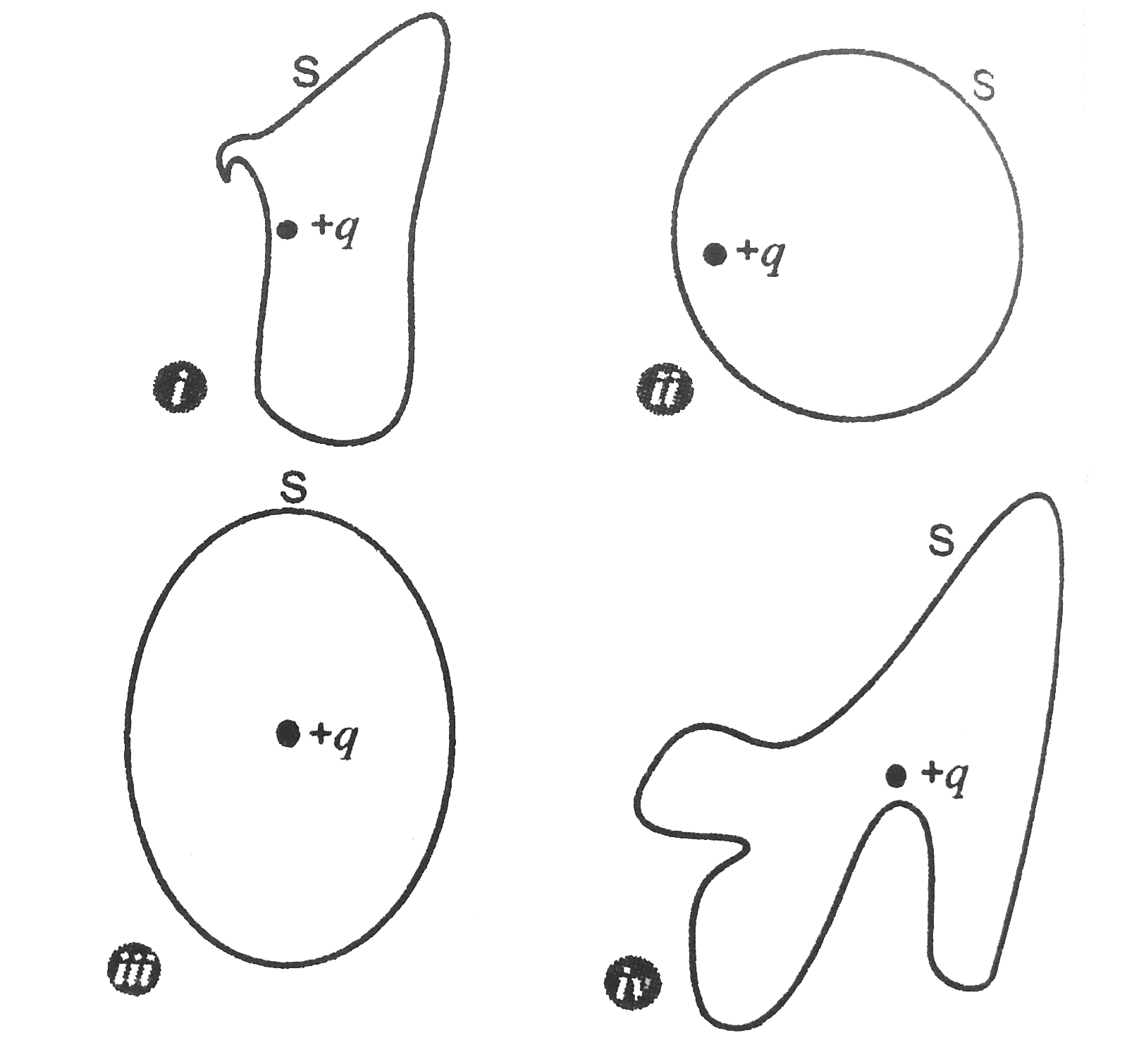A surface enclosed an electric dipole, the flux through the surface is -
To solve the problem regarding the electric flux through a surface enclosing an electric dipole, we can follow these steps:
1. Understand the Concept of Electric Dipole:
An electric dipole consists of two equal and opposite charges, +q and -q, separated by a distance d. The net charge of the dipole is zero because the positive and negative charges cancel each other out.
2. Identify the Surface Enclosing the Dipole:
We consider a hypothetical surface that completely encloses the electric dipole. This surface can be of any shape, as long as it encloses both charges.
3. Apply Gauss's Law:
Gauss's Law states that the electric flux (Φ) through a closed surface is equal to the net charge (Q) enclosed by that surface divided by the permittivity of free space (ε₀):
Φ=Qε₀
4. Calculate the Net Charge Enclosed:
Since the dipole consists of a positive charge (+q) and a negative charge (-q), the total net charge (Q) enclosed by the surface is:
Q=+q+(−q)=0
5. Determine the Electric Flux:
Substituting the net charge into Gauss's Law gives:
Φ=0ε₀=0
Therefore, the electric flux through the surface enclosing the electric dipole is zero.
Final Answer:
The electric flux through the surface enclosing the electric dipole is 0.
---
An electric dipole consists of two equal and opposite charges, +q and -q, separated by a distance d. The net charge of the dipole is zero because the positive and negative charges cancel each other out.
We consider a hypothetical surface that completely encloses the electric dipole. This surface can be of any shape, as long as it encloses both charges.
Gauss's Law states that the electric flux (Φ) through a closed surface is equal to the net charge (Q) enclosed by that surface divided by the permittivity of free space (ε₀):
Φ=Qε₀
Since the dipole consists of a positive charge (+q) and a negative charge (-q), the total net charge (Q) enclosed by the surface is:
Q=+q+(−q)=0
Substituting the net charge into Gauss's Law gives:
Φ=0ε₀=0
Therefore, the electric flux through the surface enclosing the electric dipole is zero.
The electric flux through the surface enclosing the electric dipole is 0.
Topper's Solved these Questions
- ELECTRIC CHARGES AND FIELDS BOOK - AAKASH INSTITUTE ENGLISHCHAPTER - ELECTRIC CHARGES AND FIELDS EXERCISE - TRY YOURSELF
33 Videos
- ELECTRIC CHARGES AND FIELDS BOOK - AAKASH INSTITUTE ENGLISHCHAPTER - ELECTRIC CHARGES AND FIELDS EXERCISE - ASSIGNMENT(SECTION-A) Objective Type Question
45 Videos
- DUAL NATURE OF RADIATION AND MATTER BOOK - AAKASH INSTITUTE ENGLISHCHAPTER - DUAL NATURE OF RADIATION AND MATTER EXERCISE - ASSIGNMENT (SECTION-D)
10 Videos
- ELECTROMAGNETIC INDUCTIONBOOK - AAKASH INSTITUTE ENGLISHCHAPTER - ELECTROMAGNETIC INDUCTIONEXERCISE - ASSIGNMENT(SECTION -D) Assertion-Reason type Question)
15 Videos
Similar Questions
Knowledge Check
A point charge 4μC is at the centre of a cubic Gaussian surface 10 cm on edge. Net electric flux through the surface is
A2.5×105Nm2C−1B4.5×105Nm2C−1C4.5×106Nm2C−1D2.5×106Nm2C−1A sphere encloses an electric dipole withon it. The total flux across the sphere is
AzeroBhalf that due to a single chargeCdouble that due to a single chargeDdependent on the position of dipole.
The electric flux through the surface

View SolutionThe electric flux through the surface

View SolutionAn arbitrary surface encloses a dipole. What is the electric flux through this surface ?
View SolutionWhen a 10 μC charge is enclosed by a closed surface, the flux passing through the surface is ϕ. Now another 10 µC charge is placed inside the closed surface, then the flux passing through the surface is ______.
View SolutionA charge of 8.85C is placed at the centre of a spherical Guassian surface of radius 5cm. The electric flux through the surface is
View SolutionWhich of the following statement is correct ? If E = 0 , at all points of a closed surface.
a. the electirc flux through the surface is zero.
b. the total charge enclosed by the surface is zero.
View Solution
